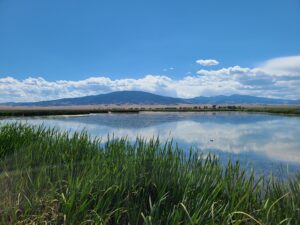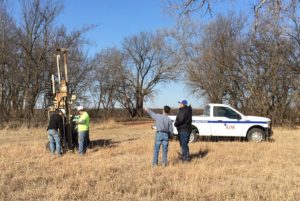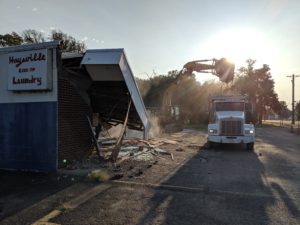 On May 26, 2023, the Supreme Court of the United States (SCOTUS) released their opinion on Sackett V. EPA, a highly anticipated case challenging the reach of Section 404 of the Clean Water Act (CWA). The Sacketts argued that the U.S. Army Corps of Engineers (USACE) were trying to regulate isolated non-jurisdictional wetlands on their property near Priest Lake (Idaho) where they were planning to build a house. For decades, Waters of the U.S. (WOTUS) have been regulated by tests that determine if a wetland is isolated or connected to a jurisdictional waterway. These competing tests, the “significant nexus” test and the “relatively permanent” test, injected significant regulatory uncertainty for projects that would likely impact WOTUS. The recent SCOTUS opinion indicated that wetlands would now only be considered jurisdictional if they had a “continuous surface water connection” to a navigable stream. This surface connection should make it “difficult to determine where the ‘(navigable) water’ ends and the ‘wetland’ begins.” Similarly, the SCOTUS also indicated that only streams with a “relatively permanent flow” would be considered jurisdictional. The guidance on how this new interpretation will be implemented is being crafted by the EPA and USACE with a stated release on or before September 1, 2023. In the interim, projects may continue to move forward under the “pre-2015 rules” with the understanding that the scope of regulatory control will likely narrow. Due to the regulatory uncertainty generated by Sackett V. EPA, the USACE has rescinded review of Approved Jurisdictional Determinations (AJDs). AJDs are helpful for project planning and mitigation budgeting but may not be necessary for Section 404 permitting. Check with your regional USACE regulator(s) or contact us for further details.
On May 26, 2023, the Supreme Court of the United States (SCOTUS) released their opinion on Sackett V. EPA, a highly anticipated case challenging the reach of Section 404 of the Clean Water Act (CWA). The Sacketts argued that the U.S. Army Corps of Engineers (USACE) were trying to regulate isolated non-jurisdictional wetlands on their property near Priest Lake (Idaho) where they were planning to build a house. For decades, Waters of the U.S. (WOTUS) have been regulated by tests that determine if a wetland is isolated or connected to a jurisdictional waterway. These competing tests, the “significant nexus” test and the “relatively permanent” test, injected significant regulatory uncertainty for projects that would likely impact WOTUS. The recent SCOTUS opinion indicated that wetlands would now only be considered jurisdictional if they had a “continuous surface water connection” to a navigable stream. This surface connection should make it “difficult to determine where the ‘(navigable) water’ ends and the ‘wetland’ begins.” Similarly, the SCOTUS also indicated that only streams with a “relatively permanent flow” would be considered jurisdictional. The guidance on how this new interpretation will be implemented is being crafted by the EPA and USACE with a stated release on or before September 1, 2023. In the interim, projects may continue to move forward under the “pre-2015 rules” with the understanding that the scope of regulatory control will likely narrow. Due to the regulatory uncertainty generated by Sackett V. EPA, the USACE has rescinded review of Approved Jurisdictional Determinations (AJDs). AJDs are helpful for project planning and mitigation budgeting but may not be necessary for Section 404 permitting. Check with your regional USACE regulator(s) or contact us for further details.
GSI will continue to provide quality consultation with stakeholders as they interpret and implement this new rule. Contact Us to ask a question or provide feedback.




